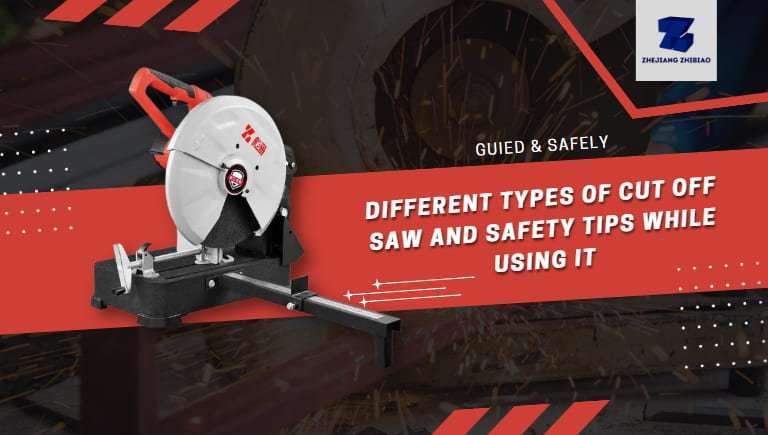Cut-off saw are powerful tools that are used to cut through various materials, including metal, concrete, and wood. They are commonly used in construction, woodworking, and metalworking industries. These saws are available in different types and sizes, each designed for specific tasks.
If you are a professional who uses a cut-off saw regularly or someone who is planning to purchase one for DIY projects, it is essential to know the different types available in the market and how to use them safely.
In this article, we will discuss the different types of cut-off saws available in the market and safety tips to keep in mind while using them.
Table of Contents
ToggleDifferent Types of Cut-Off Saw




Read More: WHAT TO DO BEFORE STARTING WORK WITH YOUR CUT OFF MACHINE
Manual Miter Saw
A manual miter saw is a hand-operated saw that can cut through wood, metal, and plastic. It is ideal for cutting at precise angles and making intricate cuts.
Pros:
- Affordable
- Portable
- Ideal for making precise cuts
Cons:
- Requires manual operation
- Limited cutting capacity
Power Miter Saw
A power miter saw, also known as a compound miter saw, is a versatile saw that can make both miter and bevel cuts. It is ideal for cutting through wood, plastic, and some metals.
Pros:
- Versatile
- Can make precise cuts at different angles
- Faster and more efficient than manual miter saws
Cons:
- Expensive
- Bulky and not very portable
Abrasive Cut-Off Saw
The abrasive cut_off saw is the most common type of cut-off saw. It uses a disc made of abrasive material to cut through various materials. These saws are typically used for cutting through metal but can also be used for cutting through masonry, tile, and other hard materials.
Pros:
- Affordable
- Easy to use
- Ideal for cutting through hard materials
Cons:
- Produces sparks
- Can be dangerous if not used properly




Cold Cut-Off Saw
A cold cut off saw, also known as a dry cut off saw, uses a carbide-tipped blade to cut through materials. Unlike an abrasive cut-off saw, a cold cut off saw does not produce sparks or heat, making it a safer option.
Pros:
- Produces no sparks
- Safer than abrasive cut-off saws
- Cuts through materials cleanly and quickly
Cons:
- More expensive than abrasive cut-off saws
- Requires a separate cooling system
Diamond Saw
A diamond saw uses a diamond-tipped blade to cut through materials. These saws are typically used for cutting through hard materials like concrete, stone, and asphalt.
Pros:
- Ideal for cutting through hard materials
- Produces clean cuts
- Low maintenance
Cons:
- Expensive
- Requires a separate cooling system
Chop Saw
A chop saw, also known as a miter saw, is a versatile tool that can be used for cutting through various materials. It uses a circular blade to cut through materials at a precise angle.
Pros:
- Versatile
- Ideal for cutting through materials at precise angles
- Available in different sizes
Cons:
- Can be expensive
- May produce sparks
Safety Tips While Using Cut-Off Saw
Using a cut-off saw can be dangerous, and following safety guidelines to prevent accidents is essential. Here are some safety tips to keep in mind while using a cut off saw:
- Wear Safety Gear: Always wear safety gear, including safety glasses, gloves, and earplugs, while using a cut-off saw.
- Position the Saw Properly: Make sure the saw is positioned correctly before starting it. The blade should be aligned with the cutting line, and the material being cut should be secured in place.
- Avoid Cutting Wet Materials: Do not cut wet materials as it can cause the blade to slip, resulting in accidents.
- Use the Right Blade: Always use the right blade for the material you are cutting. Using the wrong blade can cause the blade to break or the material to kickback.
- Keep Hands Away from the Blade: Keep your hands away from the blade while using the saw. Use a clamp or a vise to hold the material being cut.





